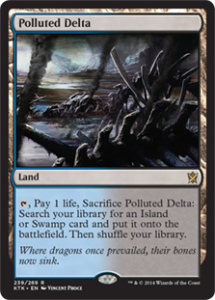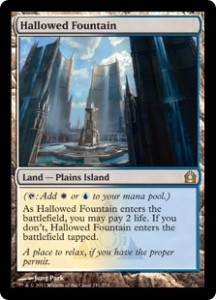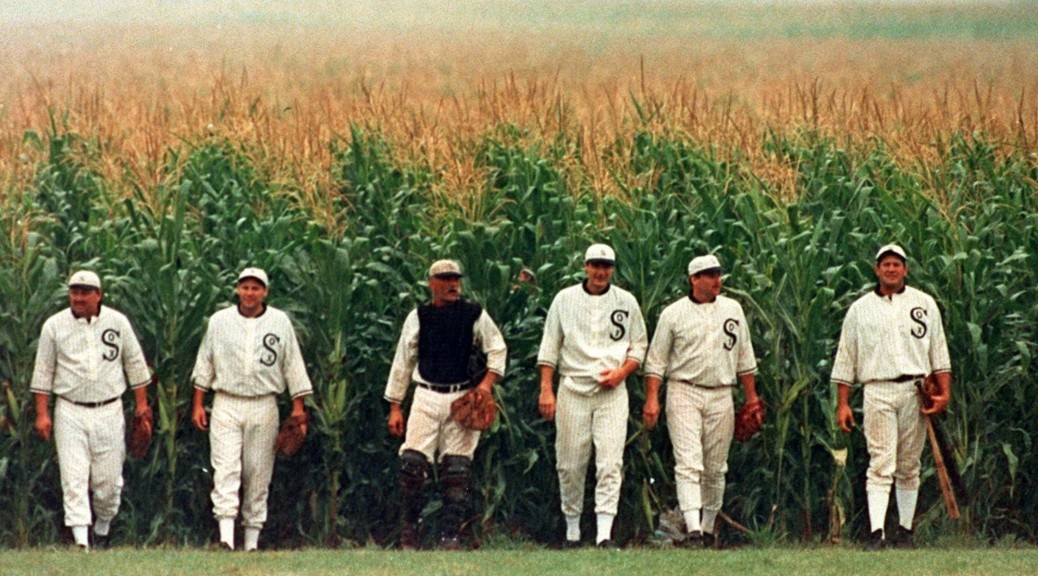By: James Chillcott (@MTGCritic)
Battle for Zendikar is a weird set from a historical perspective, and quite likely a heavy piece of foreshadowing for how WOTC intends to market Magic: The Gathering for the foreseeable future. By inserting a truly lottery ticket-like upside to opening packs in the form of Zendikar Expeditions, Wizards of the Coast boosts set sales while keeping the cost of playing Standard lower. If it works out, and all signs point to the fact that it will, we can expect generally cheaper Standard decks paid for by our willingness to roll the dice on fancy foil goodies.
So what does this mean for those of us looking to make some money on BFZ?
Firstly, if you managed to get your hands on a case of BFZ at a reasonable cost, and you have both the time and outlets to crack it and move it while demand still exceeds supply (before mid-October, ideally), you have a decent shot at making most of your money back on the back of a couple of Expeditions lands and a double fistful of key mythics. This could potentially leave you with hundreds of cards to support your Standard and EDH decks at the cost of your valuable time.
Now, if instead you were hoping to find some tasty speculative buys that others are missing, your window of opportunity may have already passed. Many of the best cards in Battle for Zendikar (e.g., Undergrowth Champion) have already been identified, and it’s possible that too many are already priced for success for us to expect much in the way of short-term hidden gems. Remember, however, that you’re really going to see the greatest returns if you skip the armchair theorizing and buckle down to test the decks ahead of the curve. The combination of battle lands and fetch lands means that four- and five-color decks are very real options this fall, and as such, several cards are still being evaluated in an outdated context.
Here, presented in order of likely upside, are my picks for the cards in Battle for Zendikar most likely to reward timely speculation, with all target prices assumed to be possible during 2015 unless otherwise noted:
1. Drana, Liberator of Malakir
When I started writing this article 36 hours ago, this was far and away my best pick for a BFZ mythic about to take off like a rocket ship. Initially, Drana was available on pre-order for around $10, but as more people have started brewing and testing with this flying war machine, the price has started to push up, especially in the last 24 hours or so. The risk is consequently rising, and I believe that Drana needs to make the top eight at Pro Tour Battle for Zendikar to hold a price over $15.
That being said, this could easily turn out to be the Dragonlord Ojutai of BFZ, a powerhouse, must-answer four-of in Abzan Aggro, a Hardened Scales variant, or something entirely new. If it looks like the premier card in a tier-one Standard deck for the next few months, Drana could spike above $25, and make a playset or two a solid way to pay for dinner. On the other hand, if Drana fails to prove herself early on, look for her to drop below $10 with the rest of the unplayed mythics and open up a more attractive entry point for potential greatness in a different metagame sometime before spring 2017. If you’re looking to get in now, however, move fast. Even as I type these words, copies are drying up and pushing the few remaining copies closer to $20, with not much meat left on the bone.
Now: $15
Target: $30+
2. Oblivion Sower
When a mythic is this far up the power curve and gets better in environments with fetch lands and delve cards, it’s worth at least considering getting in on the action. Oblivion Sower was one of the earliest mythics revealed from the set and a promising financial prospect. Then it became clear that the card was included in the associated Duel Deck for the set and we all backed off. The thing is, Polukranos was also a powerful midrange creature with a sweet ability included in a Duel Deck, and he experienced two spikes over $15 despite that fact. There also might be an Eldrazi or dragon (or both!) ramp deck that wants this guy to play mid-game defense and search up the lands to get the really big guys like Atarka and Ulamog onto the playing field. Again, this pretty much needs to be a three- or four-of in a major deck to have a chance at a spike, but you won’t find me surprised if it does.
Now: $5.50
Target: $10+
3. Retreat to Coralhelm (Foil)
In case you missed it, this card might be the next big thing in Modern, alongside the dashing Knight of the Reliquary. Ari Lax wrote an article about it yesterday, and essentially what it says is that both of these in play means having as much land and as big a knight as you want. It also allows for all sorts of toolbox shenanigans, including finding unique lands and making cards like Hangarback Walker and Jace, Vryn’s Prodigy even more powerful. Knight of the Reliquary has already jumped on the hype, moving from $5 to over $10 in the last couple of weeks. Foils of Retreat to Coralhelm are sold out on Star City Games at $8, and my guess is they will restock above $12. This doesn’t leave much to gain in the short term, but a few years of success could see this card above $20 like foils of Deceiver Exarch.
Now: $10-12
Target: $20 (long term hold)
4. Woodland Wanderer
If I had to point at the rare creature from BFZ that most benefits from a Standard format that can support four-color decks with ease, this would be it. Easy to cast as a 6/6 with pseudo-evasion that plays excellent defense, this guy makes Siege Rhino stay home and shrugs off burn spells. My testing in both Bring to Light and four-color Hardened Scales brews says he’s an unremarkable but always welcome role player that multiple decks may run as a four-of. That means he’s got a shot to be one of the few rares in the set to gain value rather than lose it.
Now: $4
Target: $8+
5. Emeria Sheppard (+foils)
You might need to hold onto these for a while to yield a decent return, but I’m finding it very hard to believe that a card this busted should be $1 in a world where I can use reanimation spells to put it into play and fetch lands to abuse it. First we need a reanimation spell worth casting, but still. At the very least, foils are solid long-term holds for Commander, especially if peak supply knocks them down into the $5 range. For now, I’m picking up 20 of these for $20 and adding them to the spec closet.
Now: $1 ($8 foil)
Target: $3-4 ($15+ foil)
6. Painful Truths
If we end up in a Standard format full of three- to five-color decks that all want to cast Siege Rhino, then I have a feeling this card will end up in high demand. Anytime you can cast it for full value and aren’t facing aggro pressure, you’ll be happy to have it, but it goes without saying that aggro often dominates this early in the season, so you may be able to snag a few copies around $1 before it finds a time to shine. Dig Through Time, Treasure Cruise, and Abzan Charm all rotate this spring, which would leave this card sitting pretty for a modest spike.
Now: $1.50
Target: $5
7. Bring to Light (foils)
There is in fact little doubt in my mind that a Bring to Light deck will make top eight of a major tournament this fall. The card is at minimum a way to play up to eight Siege Rhino, which is insane, and a deep toolbox besides. Still, Siege Rhino is arguably the best fall rare in Standard, has been all year, and still has trouble holding $4. As such, what I’m really wondering is whether Bring to Light is going to end up in Modern in some sort of value or combo deck. My gut says yes, and I’m looking to snag some copies under $15 at peak supply to follow through.
Side note: Siege Rhino foils, up as high as $20 on Modern play last winter, are now back around $8. This is a definite buy, folks, though you could risk waiting until rotation to get an even better deal.
Now: $16?
Target: $30+
Honorable Mentions:
- Felidar Sovereign dropped from $10 to $1 on the reprint, but should easily recover to $3 or $4 in a few years. Seems like safe fuel for a future buylist order if you don’t have anywhere better to stash some cash.
- Blight Herder isn’t a $1 card either. It’s seven power and eight toughness for five mana in any situation where your opponents are using delve, and the three little guys give you the option to ramp to eight mana the next turn or cast something for three right away, effectively making the 4/5 body cost two. That’s also four bodies to sacrifice to a Nantuko Husk, Bone Splinter fuel, and all sorts of things to be doing in EDH or Cube. If it finds a Standard home, it goes to $3 or $4 right away, and otherwise, it finds the same price point within a few years.
- Part the Waterveil is a Time Walk variant and a mythic. Sometimes it makes a hasty creature you can attack with twice in its wake. It’s currently $2.50 and will almost certainly top $5 to $6 by 2018.
- Crumble to Dust foils clearly have Modern applications and are currently around $7, with a solid shot of falling toward $5. It’s only an uncommon, but this could be a future $10 to $15 sideboard card in foil.
- Bad puns aside, Void Winnower shuts down Siege Rhino, Dragonlord Dromoka, Dig Through Time, Treasure Cruise, Gideon, Jace, and well, half the format. It also has at least half of an evasion ability and can’t be blocked by tokens. What it doesn’t have is a graveyard recursion spell to help it make a splash. After all, if you’re going to nine mana, you might as well go to ten and cast Ulamog. As such, I suspect you are going to get a chance to nab this card below $4 pretty soon, and that might be a decent long-term hold if someone figures out how to put him to work.
Cards You Should Be Selling
-
Expedition Lands
Be honest with yourself. You’re not going to be getting full playsets of these. They’re too expensive to play with, and the market has already fully priced these out to a level that is unlikely to be sustainable heading into peak supply in late October. In the long term, returns on the fetch lands especially may be reasonable, but cards this expensive are far less liquid than regular staples and you may find some sweet deals around the holiday season when folks are dumping them to pay for Christmas gifts. There’s also the fact that their rarity may be more like two per case rather than one per case, which if true, means they are twice as common as we thought. Sell into the hype and buy yourself something nice.
2. The Planeswalkers
Kiora is underwhelming in testing so far and Ob Nixilis is looking like a one- or two-of in a few decks, so I expect both of these cards to drop from current levels down towards $10 to $12. A reprint in the spring Clash Pack could further maul their value. Gideon, Ally of Zendikar looks like the real deal, but seeing as how he’s already closing in on $40, I’m happy to be unloading my prerelease copy into the hype looking to snag him later under $25 as necessary. Of course, if you’re planning on playing a full set next week, you might as well hang on to him, since he may win you enough games to pay for the difference.
3. Ruinous Path
It’s worth noting that Hero’s Downfall spiked to over $10 at one point, but the lack of instant speed really hurts in a format that is already missing good instant-speed removal on the early part of the curve. Even still, I’m betting against this holding $8 and recommend you trade out for better targets before the price starts to tumble.
4. Undergrowth Champion
This guy is looking pretty solid in my testing, but he’s not going to be a multi-deck role player. Get out immediately, and nab a playset once peak supply knocks this back closer to $10.
Magic Origins Update
In Digging for Dollars: Magic Origins, I called out the following specs as undervalued cards with some chance of financial success (shown with original and current pricing):
- Nissa, Vastwood Seer: $26 to $20 (-25%)
- Erebos’s Titan: $8.40 to $2 (-76%)
- Abbot of Keral Keep (Foil): $13 to $20 (+53%)
- Evolutionary Leap (Foil): $15 to $8 (-53%)
- Harbinger of the Tides (Foil): $18 to $8 (-56%)
- Demonic Pact: $3.75 to $3 (-20%)
- Animist’s Awakening: $10 to $6 (-40%)
So far, the only solid win from the list is Abbot of Keral Keep foils. I correctly identified that the card was Modern-playable and likely to rise on demonstrative play. As it turns out, the card is seeing play in both Grixis and Temur decks in Modern, including the innovative Temur Prowess deck recently played to a solid finish by Patrick Chapin. That being said, the card is still readily available around $18, which is a bit higher than my earlier entry point of $12 to $15, but still a very solid pickup. I’d recommend moving in on the card at this price if you haven’t already, as I still predict a future price over $30 on further Modern play.
Nissa is seeing play, but rarely as a four-of, and Jace has stolen a lot of her value, so she’s shaved a few dollars off instead of spiking. Of the other potential Standard winners, Erebos’s Titan and Demonic Pact have found fresh lows, and so far don’t seem to be showing up in any lists for this fall. That being said, they still have one more rotation cycle to come to the forefront, so lay your chips where your heart leads you. Erebos’s Titan especially works well with ingest and delve, so maybe there’s something there to be found.
The good news, however, is that Evolutionary Leap has yet to find a steady home in Modern and foils are down to $8, which is an entry point I find compelling. The card is too rich of a value engine with tokens and toolbox creatures to stay low forever, so I’m moving in on some more copies. Likewise, I’m a bit mystified as to how Harbinger of the Tides foils are down to $8 with it being a three- or four-of in Modern Merfolk, especially with that deck doing so well lately. Regardless, I’m down for a few more sets at that price.
The results of DFD: Origins, then, provide further proof that buying a full portfolio of long-shot lists like this is nearly always a bad strategy. Cards like Demonic Pact and Erebo’s Titan too often hinge on the emergence of a specific linear deck, whereas flexible and powerful cards like Snapcaster Mage and Abrupt Decay offer up multi-format appeal that can be tucked into a myriad of decks.
Huge Miss of the Last Set
Along with the rest of the MTG finance community, I completely missed the power inherent in a Merfolk Looter with a flexible upside when first exposed. Jace, Vryn’s Prodigy has since emerged as a viable player in both Modern and Legacy, as well as one of the top five cards in Standard. I recently called Jace foils out as a top buy, and indeed they have spiked to over $80 since then, earning me some solid profits on the copies I managed to nab before the spike.
So there you have it. Anything I missed that you’re on top of? Logic to kill one of the specs? Have at it. I’m not sensitive.
James Chillcott is the CEO of ShelfLife.net, The Future of Collecting, Senior Partner at Advoca, a designer, adventurer, toy fanatic and an avid Magic player and collector since 1994.








